There's a lot of gas power in a single trump, but how many would be needed to power your home? I'm sure you're all gagging to know, so, Heatable's crunched the numbers.
- The Groundbreaking Research:
- What Kind of Gas is a Fart?
- How Much Energy/Power is in a Fart?
- Topmost trump consuming home appliances
- Average consumption for property types per year in the UK
- The power of a fart:
- The importance of reducing carbon emissions from our homes
- Are farts flammable?
- How many times does the average person fart per year?
We all use gas every day without really ever thinking about it, whether that is driving to work, or using our gas boilers to heat our homes.
Yet, using fossil fuels like gas is harmful to the environment and so over the next few years, we are going to see a huge transition to carbon-free alternatives like hydrogen.
But, what about the human body's own gas? Could this not be the solution we’ve been looking for?
Commonly known as farts, we all produce a surprising amount of our own brand of natural gas on a daily basis.
As do our pets and other animals such as livestock, with cows producing as much as 500 litres daily, an incredible amount of flatulence.
The Groundbreaking Research:
Interested in the concept of harvesting animals' natural gases and using them to power our homes, Heatable analysed the currently available data to find out how much power each fart could feasibly provide.
We then determined how much power typical household appliances use to work out how much gas would be required to keep things running as normal for an entire year.
What Kind of Gas is a Fart?
Farts contain a mixture of gases including oxygen, nitrogen, hydrogen, methane and carbon dioxide.
But only two of those can be used for combustion and their energy is extracted, those gases being hydrogen and methane, both of which are flammable.
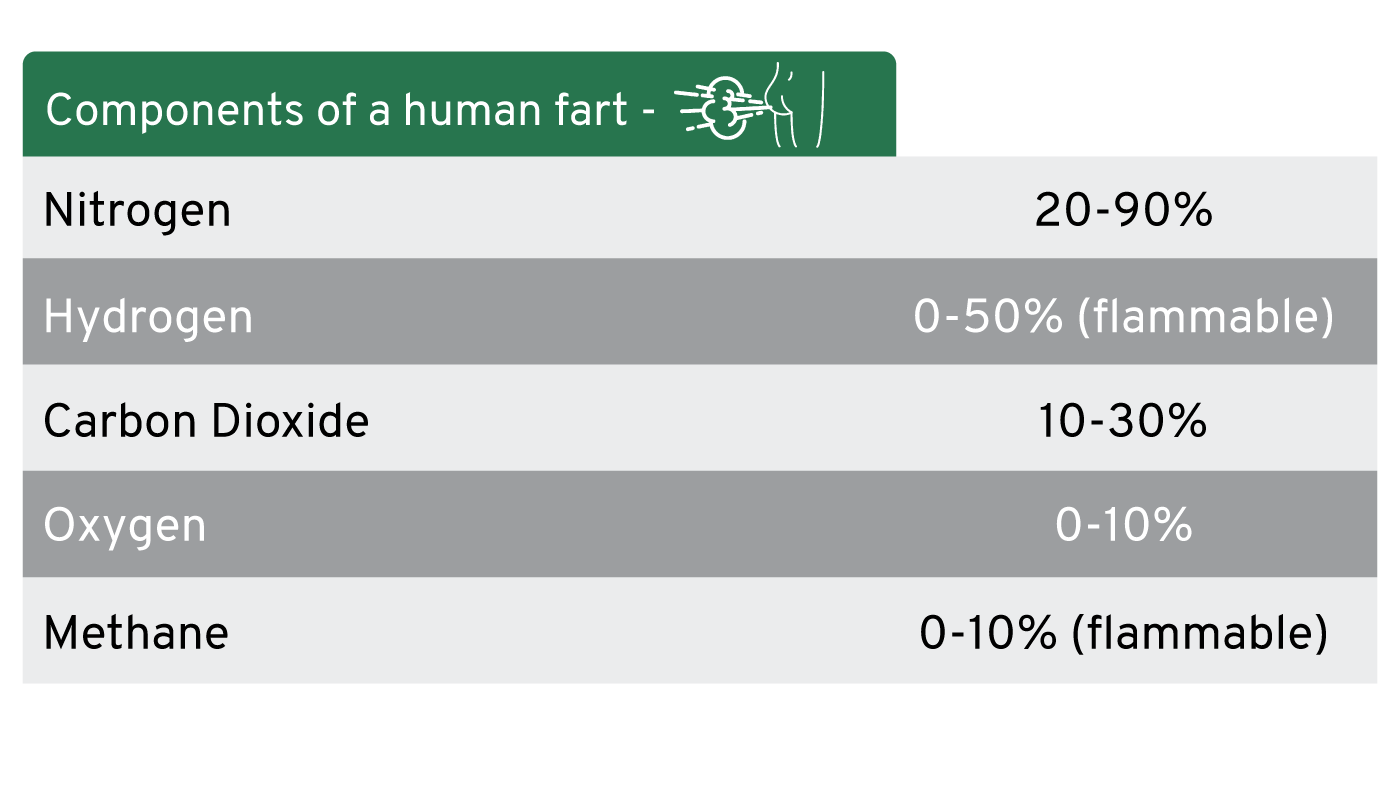
How Much Energy/Power is in a Fart?
According to energy density data, hydrogen has an energy density of 2.8 watt-hours per litre, and methane 10.5 watt-hours per litre.
Therefore, with the average fart being around 90mL, this means the average human fart contains around 0.11025 watt-hours of potential energy.
Topmost trump consuming home appliances
#1 - Boiler and radiators
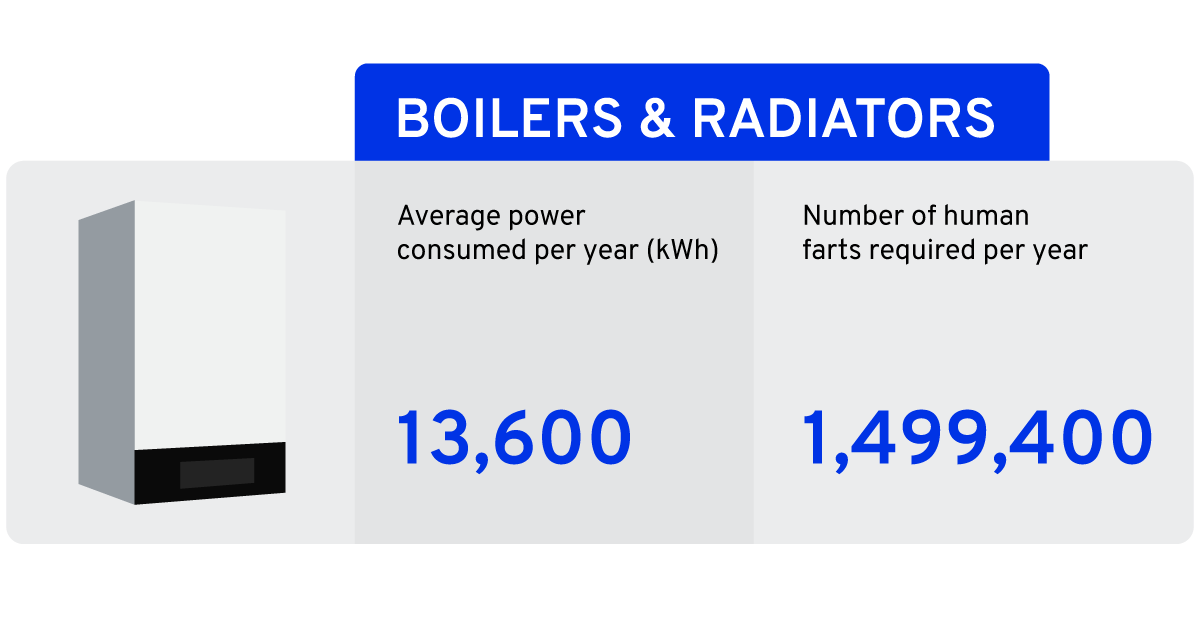
Taking the top spot for the home appliance requiring the most farts is the ever-faithful heating system.
In fact, according to official government statistics, every year, the average combi boiler uses an incredible 13,600-kilowatt-hour, meaning that it requires almost 1.5 million average-sized farts to keep pumping out the heat.
#2 - Tumble dryer
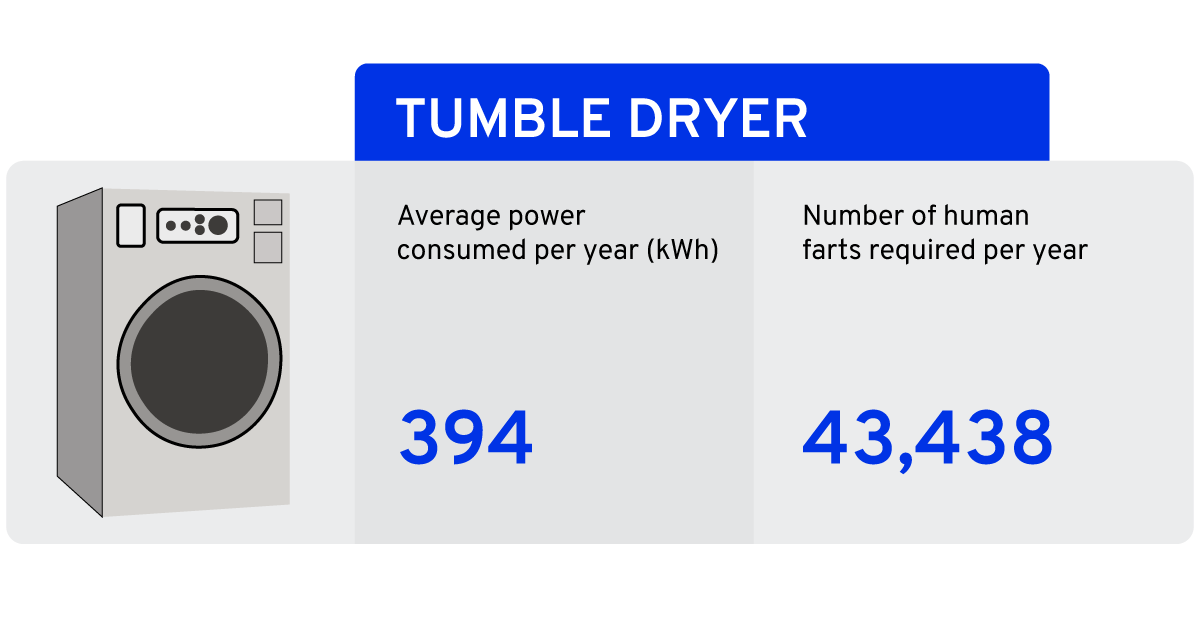
In the second spot is the power-guzzling tumble dryer. On average, there are 150 cycles in the average UK home, requiring 394 kilowatt hours and a mighty 43,438 farts.
#3 - Cooker
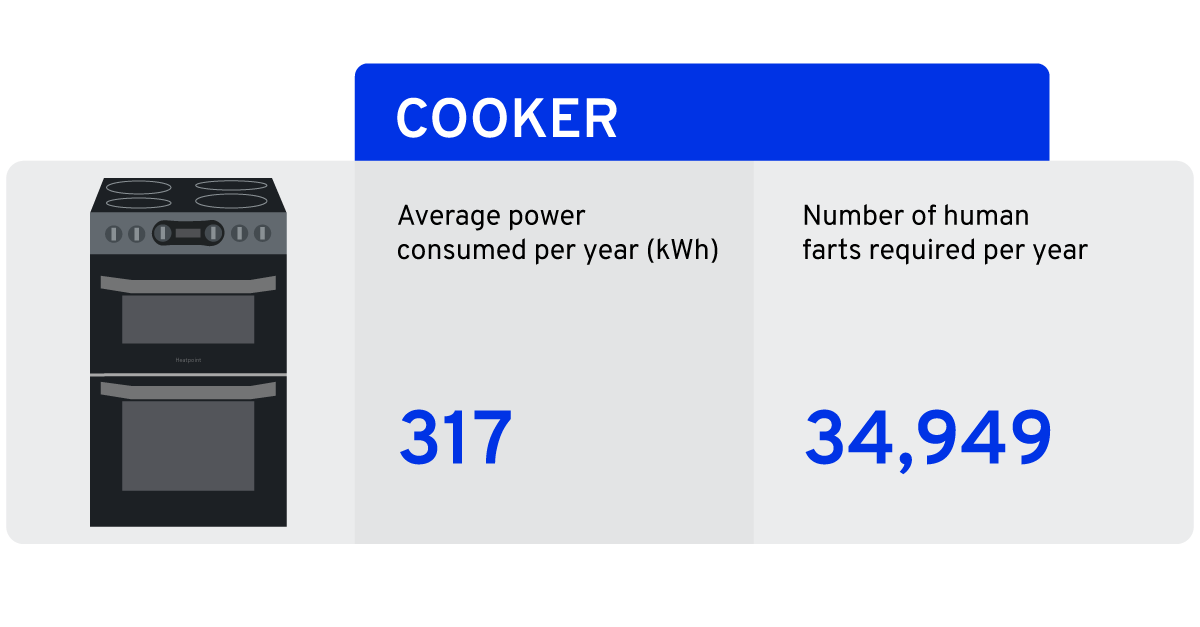
To keep your cooker baking and grilling year-round takes a hefty 317 kWh a year in the average UK humble abode. We hope you have enough gas cooking, as that’s almost 35 thousand big stinkers.
#4 - Fridge Freezer
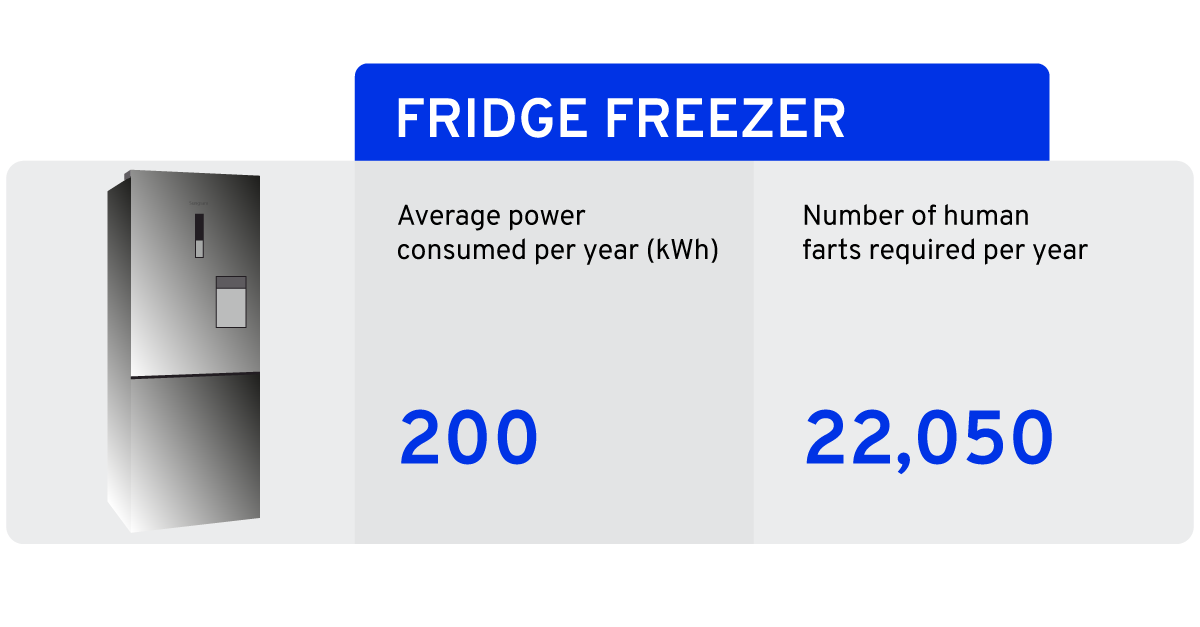
The exact power required depends on whether you are using an efficient A-rated fridge freezer or not.
The above figures are based on an A-rated model and not an old, inefficient model, which would require even more fart power at 427 kWh a year.
#5 - Washing machine
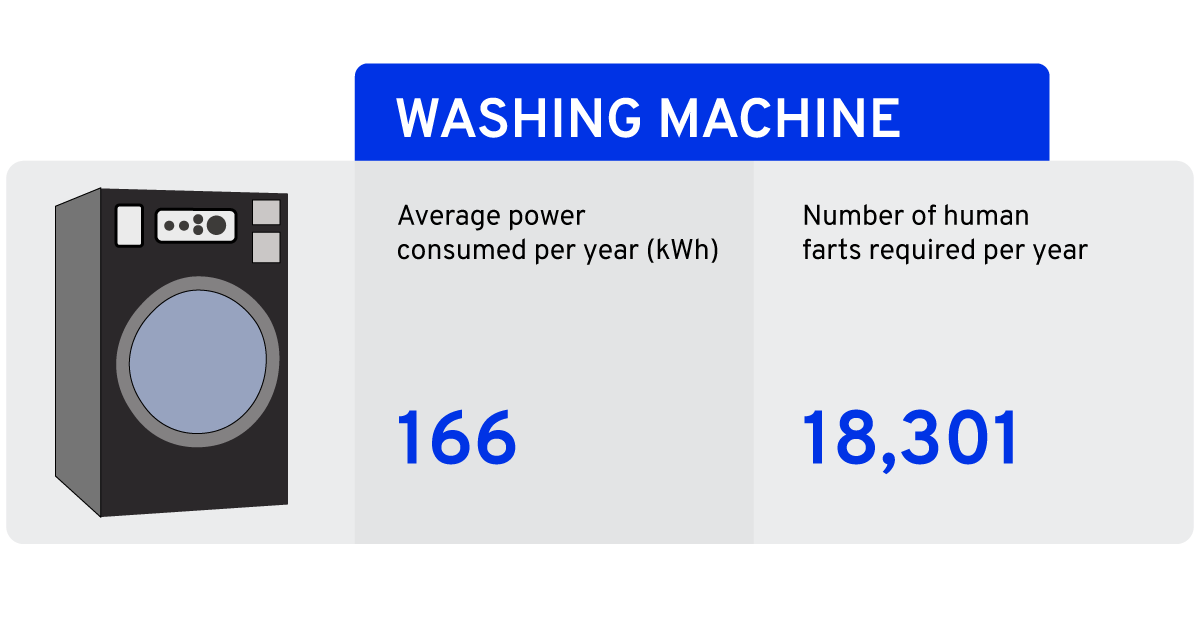
It comes as no surprise that washing machines use a lot of power. With an average of 270 cycles every year per home, your machine could be using 166kWh every year.
Each cycle can vary between 0.3kWh and 1kWh, depending on the spin cycle, temperature, size (kg load) and efficiency rating.
#6 - Television (TV)
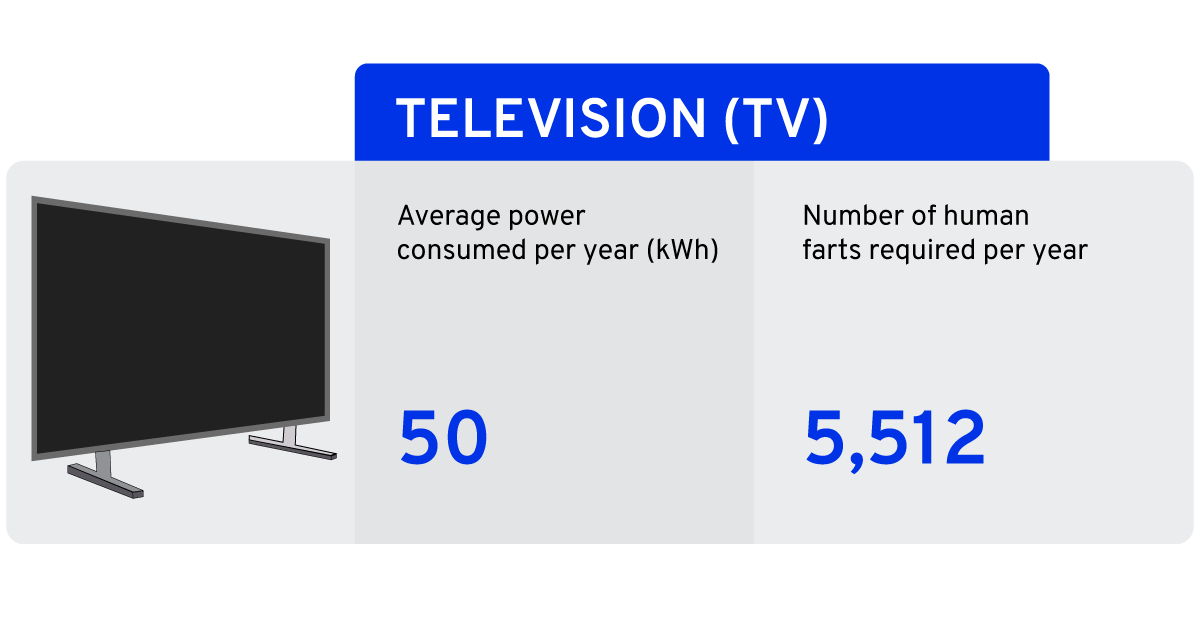
The above figures are based on a TV running for a very conservative 4 hours a day over the course of a year. Still, that requires well over 5,000 farts to keep your favourite shows on the screen.
Average consumption for property types per year in the UK
We've figured out the number of farts required to power the most common home appliances, but how many would be needed to keep your entire house running for a year?
We did the maths and as it turns out you'd need a lot.....
In order to determine the power required for average UK properties, we used official Ofgem data. Ofgem breaks down their averages into small, medium and large-sized homes.
As you can see, the average UK home would require a hefty amount of flatulence to keep it powered year-round.
In fact, for small homes, you'd require over 2.5 million big ones to keep the power on and an incredible 4 million+ if you live in a large property.
Related domestic energy guides:
The power of a fart:
What about fart size?

This means each fart packs a powerful punch:
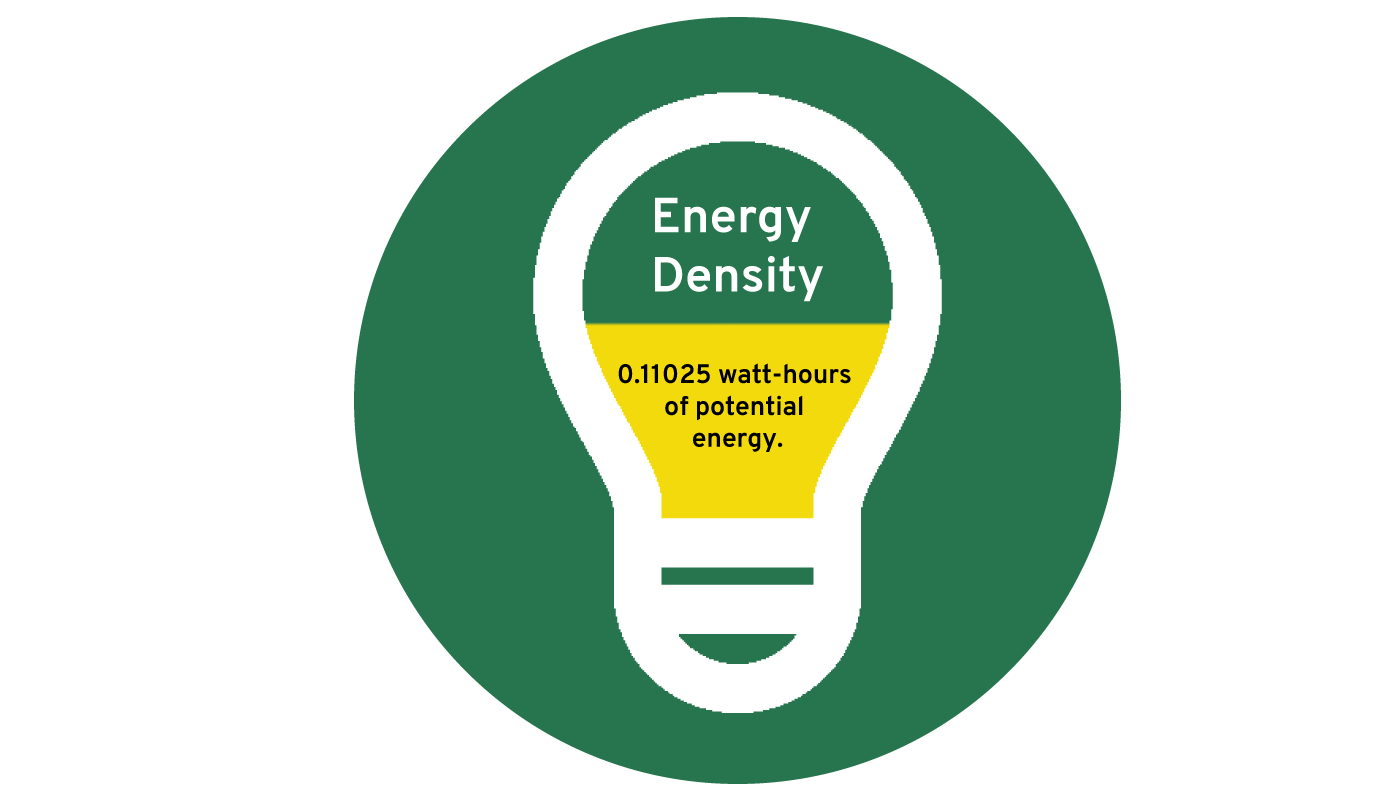
The importance of reducing carbon emissions from our homes
Human carbon emissions are largely responsible for global warming and the current climate crisis we are experiencing.
This is why the UK government together with many of the world’s largest economies have pledged to become carbon neutral by 2050.
The UK government is adopting many strategies and policies to achieve the targets and greener households are going to have a major part to play.
At present, home heating is responsible for the majority of carbon emissions.
In fact, Energy Catapult Analysis shows that in 2017, the average household generated 2,745 kg of CO2 emissions from heating, which is around 31% of the total.
What’s the solution? Low carbon and zero-carbon alternatives, including hydrogen boilers and heat pumps.
Here are some more interesting facts about flatulence:
Are farts flammable?
Two gasses contained within farts are flammable, these are hydrogen and methane.
It's the quality that also means they can be used for combustion and the energy extracted.
How many times does the average person fart per year?
According to reliable sources like Healthline, the average person can fart anywhere between 5 and 15 times a day, or between 1,825 and 5,475 each year.
Methodology:
To do this we first determined the average size of a human fart or flatus: https://www.ncbi.nlm.nih.gov/pmc/articles/PMC1378885/
We then determined the composition of a fart and its average hydrogen and methane content. The hydrogen content of a human fart can be between 0-50%, while methane can be between 0-10%. However, for the purpose of coming to a figure, we assumed an average content of 25% hydrogen and 5% methane.
Once we knew the average-sized fart, we used energy density data to determine the potential energy in the average human fart.
Using official government data on UK appliance usage we then determined how many farts would be required to match the current average power usage for the UK’s most popular home appliances (provided in kilowatts per hour).
Please note: all figures are based on statistical averages and do not account for above or below-average flatulence and/or appliance usage.





